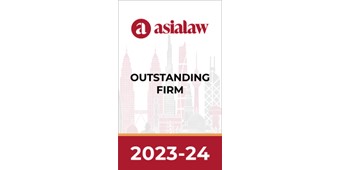Contents
1. Background
Previous and current framework
- Under the repealed 2014 Housing Law, land used for commercial housing projects was required to be either residential land, a combination of residential and other types of land, or land acquired through the transfer of residential land. In all cases, the proposed project was required to include at least a parcel of residential land (“Residential Land Requirement”).
- Although proposals were made during the drafting process to remove the Residential Land Requirement for commercial housing projects,1 both the 2023 Housing Law and the 2024 Land Law ultimately retained the same restrictive approach as their predecessor.
Background for Pilot Mechanism
In practice, most new commercial housing projects, especially large-scale ones, are developed on land that was not initially designated as residential, e.g., agricultural land or a mix of agricultural and non-agricultural land. Over the past few years, the supply of housing projects has failed to meet market demand, leading to unexpectedly high housing product prices. One contributing factor to such imbalance is the difficulty in accessing land for commercial housing development under the current legal framework.2
To address this, the National Assembly's Resolution 171/2024/QH15 (“Resolution 171”) and Decree elaborating Resolution 171 (“Decree 75”) were issued to set out a pilot mechanism (“Pilot Mechanism”) for implementing commercial housing projects through available land use rights (“LURs”) and/or through agreements on voluntary transfer of LURs, in each case including LURs over land that is not designated as residential. The Pilot Mechanism aims to promote a stable and transparent real estate market, streamline administrative procedures, and reduce compliance costs. It is intended to enable investors to proactively access the non-residential land bank and implement projects through direct transactions with existing land users.3
The Pilot Mechanism is expected to foster a more dynamic and attractive environment for real estate development. This initiative is anticipated to encourage M&A activity in the sector, and improve access to more reasonably priced housing products for both residents and investors.
2. Pilot Mechanism
Pilot period
Resolution 171 and Decree 75 took effect on 1 April 2025 and will remain in force for a period of 5 years. Upon the expiry of 5-year period, any projects approved under the Pilot Mechanism may continue until the end of their respective project terms. The rights of property owners under existing laws will remain unaffected.
Land types
Without being subject to the Residential Land Requirement, developers may obtain LURs over non-residential land and/or convert the land use purpose of the following land types to implement projects under the Pilot Mechanism introduced by Resolution 171 and Decree 75. (“Pilot Projects”), provided that the applicable requirements for Pilot Project are satisfied:
- Agricultural land;
- Non-agricultural land other than residential land;
- Residential land combined with other land types.
That said, neither Resolution 171 nor any policy discussion to date has addressed whether foreign-invested economic organizations (“FIEs”), as defined under the 2024 Land Law, are permitted to acquire LURs over the abovementioned land types via voluntary transfer for the purpose of conducting the Pilot Projects. We expect that the Pilot Mechanism will not alter the existing position regarding FIEs' direct access to land banks to obtain LURs. However, it may broaden the scope of eligible target projects for M&A transactions.
Requirements applicable to Pilot Projects
The implementation of Pilot Projects is subject to the following 5 requirements:
- Planning Compatibility: The project land must be consistent with the relevant district-level land use plan or urban construction plan.
- Housing Development Program Compliance: The project land must fall within the scope of the approved local housing development program.
- Inclusion in Pilot Area List: The project land must be included in the list of Pilot Project areas approved by the provincial People's Council (“Pilot Area List”). The procedures for registration and selection as a Pilot Project, as well as the issuance of the Pilot Area List, are set out in Decree 75.
- Approval for LUR Assignment: The agreement on voluntary assignment of LURs to implement the Pilot Project must be approved by the provincial People's Committee.
- Compliance with Legal Requirements: The developer must comply with all relevant legal and regulatory requirements.
In cases involving the use of national defense land or security land that has been re-designated for the purpose of implementing a Pilot Project, an additional written approval is required from the Ministry of National Defense (for defense land) or the Ministry of Public Security (for security land) in addition to the requirements listed above.
Criteria applicable to Pilot Projects
To prevent land speculation and hoarding, ensure manageable urban development, and maintain consistency with existing plans and policies,4 the Pilot Mechanism sets out the following specific criteria for the selection of Pilot Projects:
- Urban Area Requirement: Pilot Projects must be located within urban areas or in areas designated for urban development.
- Pilot Area Limitation: The total residential land area in Pilot Projects (including both existing residential land and land planned for conversion to residential use) must not exceed 30% of the additional residential land planned for the 2021 – 2030 period:
"Total residential area in Pilot Projects ≤ 30% x (Planned residential area - Existing residential area)" - Inclusion in Land Use Plan: Pilot Projects must be included or intended to be included in the district-level annual land use plan.
- Exclusion from Revocation List: In cases where LURs are acquired through voluntary transfer, the Pilot Project must not be listed among the construction works or projects subject to land revocation as approved by the provincial People's Committee.
Process for Implementing the Pilot Mechanism
Decree 75 provides detailed guidance on the implementation of the Pilot Mechanism and outlines the following general process, which is intended to shorten project timelines and reduce administrative costs:
- Notification of Registration: A public notification inviting registration for Pilot Projects must be published on the official portal of the relevant provincial authority;
- Application Submission: Developers interested in the Pilot Mechanism must submit their application to the Department of Agriculture and Environment (“DAE”);
- Review and Evaluation: Within 15 days after the registration deadline, the DAE will review and evaluate the proposed land areas and prepare a list for submission to the provincial People's Committee. The provincial People's Committee will then consider the proposed list and submit its recommendation to the provincial People's Council;
- Approval of the Pilot Area List: Following its evaluation, the provincial People's Council must approve the Pilot Area List. The provincial People's Committee must then announce the approved list and issue a notification to the developer confirming the approval of the Pilot Project under the Pilot Mechanism (“Pilot Project Approval”). The Pilot Area List may be supplemented over time, provided the criteria applicable to Pilot Projects are met;
- LUR Agreement: Following the Pilot Project Approval, the developer must enter into LUR assignment agreements with existing land users;
- LURC Acquisition and Land Purpose Conversion: The developer must apply for the issuance or amendment of the land use rights certificate (“LURC”), and for the conversion of the land use purpose, in accordance with the procedures under the 2024 Land Law and its elaborating regulations;
- IPA Acquisition: The developer must apply for in-principle investment approval (“IPA”), together with investor approval, in accordance with the procedures under 2020 Investment Law;
- Other Licenses: After being granted with IPA, the developer must complete any other relevant procedures and obtain the necessary licences required to implement the Pilot Project.
Order of Priority for Selection of Pilot Projects
To ensure compliance with the pilot area limitation (i.e., not exceeding 30% of the additional residential land planned), the selection of Pilot Projects must follow the following order of priority:
- Projects that have been granted IPA or other approvals by State authorities allowing implementation of the project in cases involving receipt of LURs or availability of LURs issued prior to the enactment of Resolution 171;
- Projects prioritized for implementation by the Ministry of Defense and the Ministry of Public Security;
- Projects located on land occupied by production and business facilities that need to be relocated due to environmental pollution or in accordance with construction and urban planning requirements.
- Projects with available LURs.
- Projects involving the proposed assignment of LURs.
First come first serve: Where multiple projects fall within the same priority level, preference is given to projects aimed at urban renovation and improvement. If the total registered residential land area for pilot projects exceeds the 30% threshold as stipulated, preference will be given to the organization that submitted its application first.
- Government Report No. 598/BC-CP dated 23 October 2023 on certain provisions of the draft Land Law (“Report 598”).
- Report 598.
- Proposal 631/TTr-CP of Government dated 10 October 2024 on Resolution 171 (“Proposal”).
- Proposal.


















